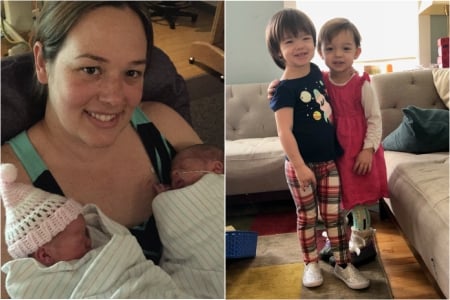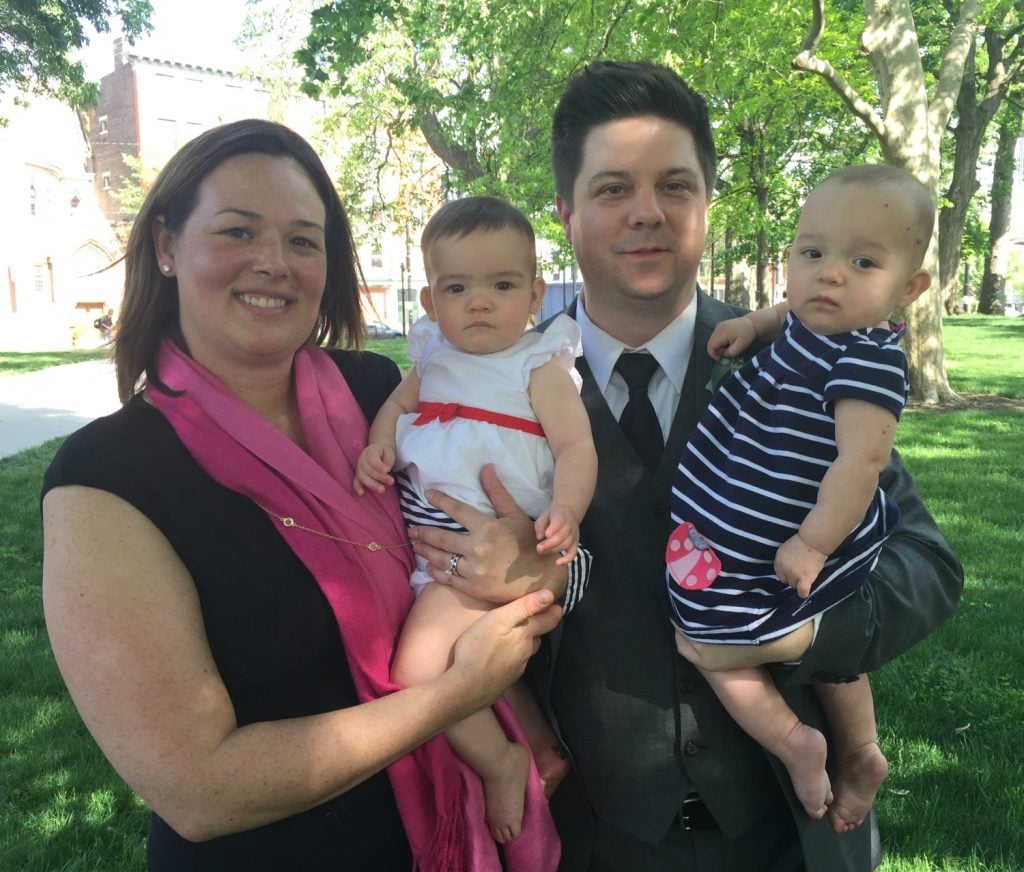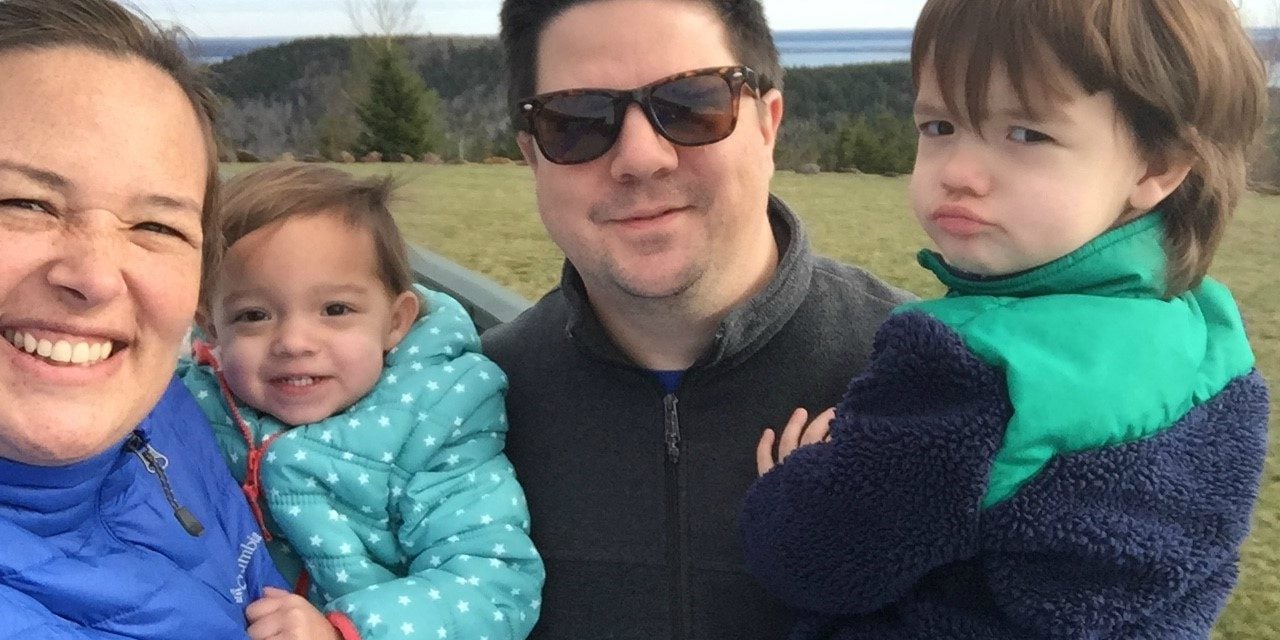My twin daughters are a daily reminder about the importance of access to quality prenatal care for pregnant women and quality care for young children. Eighteen weeks into my twin pregnancy, I was diagnosed with a condition that, left unnoticed and untreated, carried a 95 percent mortality rate for Baby A. This was not a condition that my doctors were necessarily looking for — it was picked up by an ultrasound technician with a keen eye.
I was quickly put on bedrest and told that if I made it to 32 weeks of pregnancy, I would be hospitalized, and if I made it to 34 weeks of pregnancy, my twin girls would be delivered via a planned Caesarean section. I was not allowed to have contractions or go into labor at all. In fact, even if I was in the hospital and went into labor, my doctors told me that they could not guarantee that Baby A would be delivered alive. It was an extremely harrowing and stressful time for my husband and me.
Because I had access to the best high-risk maternal-fetal doctors in Cincinnati, my twin daughters, Helen and Elizabeth, were born healthy at exactly 34 weeks. They weighed about 4.5 pounds at birth and were immediately admitted to the neonatal intensive care unit (NICU), where they stayed for the next 16 days.
 My daughters’ premature birth and NICU stay qualified them for support services to ensure they hit the appropriate developmental milestones. These optional screenings are every six months until my girls reach 3 years old. Although this is a standard practice for children born prematurely, it only was mentioned to me in an offhand comment a day or two before my daughters were discharged from the NICU.
My daughters’ premature birth and NICU stay qualified them for support services to ensure they hit the appropriate developmental milestones. These optional screenings are every six months until my girls reach 3 years old. Although this is a standard practice for children born prematurely, it only was mentioned to me in an offhand comment a day or two before my daughters were discharged from the NICU.
Having been alerted to these special screenings, I kept a lookout for the invitation letter in the mail. Only one of my girls was sent the invitation to participate. After several calls and voicemails, I finally got in touch with someone to schedule appointments for them both. The times were limited to four-hour afternoon blocks only on two days of the week. If I hadn’t known about the importance of early intervention through my work, and if I hadn’t had a flexible workplace that allowed me to take time off, I would not have been able to take my daughters to their appointments.
After their 18-month developmental screening, my girls both qualified for early intervention supports: occupational therapy (Helen), physical therapy (Elizabeth) and speech therapy (both). At the time, I remember being overwhelmed by the additional appointments, but by the time of their final developmental screening around 28 months, both girls were at or above the developmental milestones for their age and graduated from being monitored. Today, weeks away from their third birthday, Helen and Elizabeth are thriving, and I’m happy to say they are meeting or exceeding all developmental benchmarks.
This personal experience makes me all the more thankful and excited about an opportunity that Pritzker Children’s Initiative (PCI) has provided StriveTogether by funding an important project in the prenatal-to-age-3 space to ensure that every child, regardless of race or zip code, can receive the support needed to have the best possible start to life. With PCI’s support and in partnership with the National Institute for Children’s Health Quality (NICHQ), we have launched a national impact and improvement network focused on improving prenatal-to-age-3 milestones with teams from six StriveTogether Cradle to Career Network communities:
- Albuquerque, New Mexico (Mission: Graduate)
- Memphis, Tennessee (Seeding Success)
- Norwalk, Connecticut (Norwalk Acts)
- Salt Lake City, Utah (Promise Partnerships of the United Way of Salt Lake)
- Spartanburg County, South Carolina (Spartanburg Academic Movement)
- Tucson, Arizona (Cradle to Career Partnership)
 These teams will work over the next 15 months to apply StriveTogether’s continuous improvement methodology to improving milestones for children from birth to age 3 in their community. And hopefully, like other impact and improvement network teams, we will identify best practices by the end of the network in June 2019.
These teams will work over the next 15 months to apply StriveTogether’s continuous improvement methodology to improving milestones for children from birth to age 3 in their community. And hopefully, like other impact and improvement network teams, we will identify best practices by the end of the network in June 2019.
I look forward to working with these partnerships in the Cradle to Career Network and hearing about the impact these communities have on improving milestones for our youngest, most vulnerable children. As this impact and improvement network takes shape, we will share their progress, lessons and successful results with the StriveTogether network and the field to ensure that every child receives the best start to life, just like my girls did.






